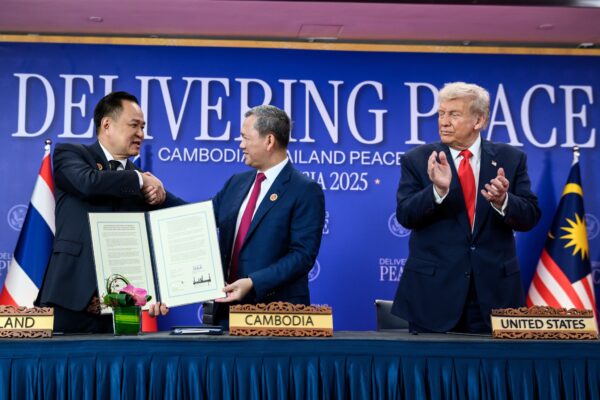Copyright thediplomat

To the delight of U.S. President Donald Trump and current ASEAN chair Malaysia, Thailand and Cambodia’s prime ministers signed the Kuala Lumpur Peace Accords on October 26. Under point 3 of the agreement, the parties will establish the ASEAN ceasefire observation team. Lessons from ceasefire monitoring in other conflicts are key to informing what is now needed for the hard work of implementation to succeed. Implementation must be reinforced, especially given recent signs and rhetoric revealing that Thailand and Cambodia’s peace is fragile. At the U.N. General Assembly in September, both questioned the sincerity of the other combatant, accusing each other of provocations and violations of the ceasefire agreement. Thailand said Cambodian surveillance drones have crossed into Thai territory daily. Cambodia said Thailand is exercising territorial control on a segment of the border not yet demarcated. It is not surprising that each side aimed to formally register its grievances against the other, with the aim of messaging strength domestically and attempting to gain an upper hand in future talks. The work of the ceasefire monitoring team, currently the ASEAN interim team, provides stepping stones toward a more sustained de-escalation. The ceasefire monitoring itself is an important step, but it is more akin to a Band-Aid for the border tensions, rather than the solution. It can contribute to confidence-building (recognized in point 4c of the agreement) but conversely it can also be used as a scapegoat if there is not progress toward a more comprehensive agreement. The sides expressed explicit appreciation to Trump (point 8 of the agreement). It remains to be seen, however, how much attention and resources will be invested by the U.S. to support the hard work of actualizing next steps from the agreement. Unless Thailand and Cambodia calculate that there are incentives for implementation following the peace deal – and costs for lack of follow-through – the underlying tensions will persist. Lessons in ceasefire monitoring in other cases can be applied to Thailand and Cambodia’s tensions. These lessons suggest three factors that will be crucial to implementation: political will, problem-solving, and impacted communities. The ASEAN monitoring team’s success depends less on its technical capacity and more on whether Thailand and Cambodia actually want to resolve their dispute. The United States and Malaysia should focus on creating incentives for both parties to implement meaningful resolution. This includes managing fallout from any disruptions in the short-term and encouraging longer-term trust and improved rhetoric (in line with point 4b of the agreement on refraining from harmful rhetoric). Second, ceasefire monitoring should be aimed at finding solutions, not litigation. All parties must transform the monitoring mechanism from a documentation exercise into a joint problem-solving forum. This directly builds on political will and the level of trust built between the sides. Thailand and Cambodia’s speeches at the United Nations in September demonstrated that they see value in presenting their own commitments to peace, yet were keen to question the sincerity of the other side. If the same vein continues, the sides will view ceasefire monitoring largely as a platform for logging their grievances. A better path will bring them toward confidence-building. For example, clearing landmines is one of the top challenges in the border dispute (in line with point 4d of the agreement), yet it also provides an opportunity for building progress, if the focus shifts from litigation to practical solutions for demining. Finally, local communities will be key to implementation. If Cambodia and Thailand are serious, they will find ways to empower local populations in monitoring and resolving ceasefire issues. Community participation also supports practical problem-solving, such as addressing the economic costs of the border tensions. Reports on the decline in bilateral trade, lost revenue in border towns, and the return of Cambodian migrant workers demonstrate the hit to communities’ livelihoods. Cambodia’s complaint to the U.N. High Commissioner for Human Rights about psychological warfare by Thailand through broadcasting haunting sounds is an example of a grievance and request for external investigation by one of the sides. However, extrapolating from that complaint points to the potential more broadly for documenting insights from border communities, such as the challenges they face in being displaced from their homes and conditions for safe return. The sensitivity surrounding civilian displacement is demonstrated by the fact that the peace agreement punts the related issues of “the survey and demarcation of land boundary” to the future (point 4d). External pressure to and incentives for Thailand and Cambodia to reach the Kuala Lumpur Peace Agreement are positive. However, difficult and continued work lies ahead to actualize the agreement, including the need to keep up external attention and support.



